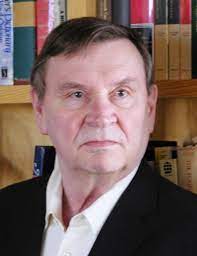Stark, Rodney

Bio: (1934-2022) American sociologist. Rodney Stark received his doctorate from the University of California, Berkeley, and taught at the Universities of Washington and Baylor. Stark devoted most of his scientific career to the study of religion. In Religion and Society in Tension (1965), co-authored with Charles Glock, the authors critique the functionalist theory of religion, noting that religious divisions and conflicts can be a major threat to social integration.
In The Future of Religion (1985), co-authored with William Bainbridge, the authors present their approach to religion, which became known as Stark-Bainbridge's theory of religion. Their theoretical approach to religion is based on the rational choice theory and social exchange theory. According to them, almost all human interactions can be considered a form of exchange. Religion serves to satisfy desires, that is, to provide rewards, and that can be, both for concrete things and for abstract needs (the meaning of life, the salvation of the soul). The investment in the realization of the award will be proportional to the size of the award. If people cannot easily achieve their goals, then they accept compensators, hope, and the promise that they will achieve those goals in the future, and that is exactly what religion gives them.
Religion, above all, refers to the supernatural order, the belief that there are forces that are more powerful and surpass natural physical forces. Religions offer explanations, that is, explanations of why some awards are given, as well as how those awards can be achieved. The main difference between magic and religion is that magic offers specific compensators and there is no long-term relationship between those who provide magic compensators and their "clients". With the creation of complex societies comes the emergence of religious experts and this is one of the first professional specializations. Religious experts can join organizations to monopolize religious authority, which they achieve if they establish a close relationship with the state. Some religions abandon the giving of supernatural compensators, which reduces people's attachment to these religions. The authors cite Taoism and liberal Protestantism as examples of this process.
In the same book, these two authors also studied the process of secularization and concluded that secularization is not a novelty, but part of the regular cycle of religious development. They believed that the process of secularization was twofold. While the importance of religious organizations that exhibited greater secularism was declining, on the other hand, cults and sects were strengthening, and many sects were growing into denominations. In addition, the authors claim that many people who consider themselves atheists often believe in some mystical and supernatural things.
They also introduce a typology by which they separate sects and cults. Sects represent organizations that separate from already established religious organizations, while cults represent completely new, original movements. There are three types of cults. Audience cults have the lowest level of formal organization, their members have little contact with each other or with cult leaders, and communication is mostly done through the mass media and occasional conferences - examples are astrology and the belief in flying saucers. Client cults have a greater degree of formal organization and offer followers services in specific fields - health, personal achievement, and the like. Cults that act as movements have the highest degree of formal organization and integrate their followers into that organization. These cults differ, among themselves, in the degree and scope of control they have over their followers.
Fields of research
Authority Christianity Church Conflict Health Integration Magic Protestantism Rationality Religion Secularization AtheismTheoretical approaches
Rational Choice TheoryMain works
Religion and Society in Tension (1965);
American Piety (1968);
The Future of Religion: Secularization, Revival, and Cult formation (1985);
A Theory of Religion (1987);
The Churching of America 1776-1992: Winners and Losers in Our Religious Economy (1992);
Religion, Deviance, and Social Control (1996);
The Rise of Christianity: A Sociologist Reconsiders History (1996);
Acts of Faith: Explaining the Human Side of Religion (2000);
The Rise of Mormonism (2005);
The Victory of Reason: How Christianity Led to Freedom, Capitalism, and Western Success (2005);
Religious Hostility: A Global Assessment of Hatred and Terror (2014);
Bearing False Witness: Debunking Centuries of Anti-Catholic History (2016).

